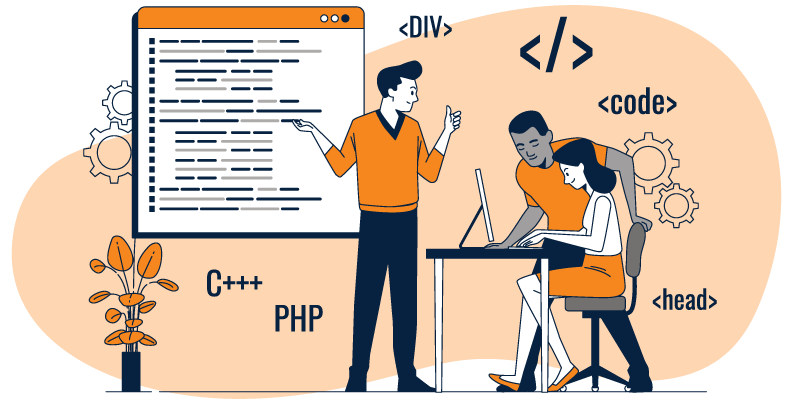It comes as no surprise that software development has undergone a significant transformation in recent years. Done are the days when developers spent countless hours writing lines of code to create an application from scratch. Today, the rise of low-code/no-code development platforms has made it possible for non-technical users to create applications with ease. These platforms offer a visual interface and drag-and-drop functionality, making the development process faster, cheaper, and more accessible to all.
But what does this mean for developers? Is their role in the process diminishing or evolving? In this blog post, we’ll discuss the rise of low-code/no-code development platforms and their impact on the world of software development.
What Are Low-Code/No-Code Development Platforms?
Low-code/no-code development platforms are software tools that allow users to create apps with minimal or no coding required. Simply put, they use visual interfaces and drag-and-drop functionality to develop the apps. The primary goal of these platforms is to make the development process more accessible to general users.
Low-code/no-code development platforms come in two different forms. First, there are low-code platforms, which, as mentioned, provide a visual interface for users to drag and drop pre-built components and create custom workflows. As such, these platforms require some level of technical expertise, but they don’t require users to write any code from scratch. Second, there are no-code platforms, which are even more accessible and don’t require any technical expertise. Fundamentally, these platforms use pre-built templates and visual interfaces to create applications.

Why Are They Gaining Popularity?
Low-code/no-code development platforms have gained popularity for a number of reasons. First and foremost, they allow organizations to develop and deploy applications faster. Thanks to these platforms, developers can create applications in a matter of days, rather than weeks or months. This is because they don’t have to write code from scratch, and they can use pre-built components and templates to speed up the development process.
Second, low-code/no-code development platforms are more accessible to non-technical users. This means that organizations can empower employees to create their own applications, rather than relying on developers to do everything. This allows for greater flexibility and agility during the development process, as non-technical users can create applications to solve their own problems.
Finally, low-code/no-code development platforms can prove cost-efficient. By reducing the amount of time and effort required to develop apps, companies can save money on development costs. Additionally, by empowering non-technical users to create their own apps, businesses can cut costs on hiring additional developers.
What Does It Mean for Developers?
The rise of low-code/no-code development platforms has both positive and negative implications. On the positive side, these platforms can free up developers from mundane, repetitive tasks, allowing them to focus on more complex and challenging projects. Additionally, these platforms can help them be more productive, as they can use pre-built components and templates to speed up the development process.
On the negative side, low-code/no-code development platforms can reduce the demand for traditional developers. As non-technical users become more empowered to create their own apps, the need for developers may decrease. In addition, these platforms may lead to a decrease in the quality of apps, as these users cannot have the same level of expertise as professionals.
Additionally, the same problem may occur if the app requires extensive customization, as non-technical users don’t have the necessary knowledge and skills to create some of the more complex solutions. In such cases, hiring a team of developers may be the best option.
Low-Code/No-Code Development Platforms: A Summary
Low-code/no-code development platforms are changing the way software is developed, deployed, and maintained. These platforms allow businesses to develop and deploy apps faster, empower non-technical users to create their own, and save money on development costs. However, these platforms also concern developers, as they may decrease the demand for traditional positions and lead to a decrease in the quality of apps. As the popularity of these platforms continues to grow, it will be interesting to see how they shape the future of software development.
As for us, some of the popular low-code/no-code platforms we like to use depending on the client’s needs include WordPress, Webflow, and Shopify, among others.
Whether you need to develop complex applications or streamline simple processes, Inform Technologies has you covered. So why wait? Contact us today to learn more about how we can help you achieve your business goals faster and more cost-effectively than ever before.